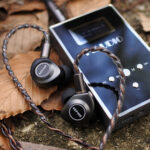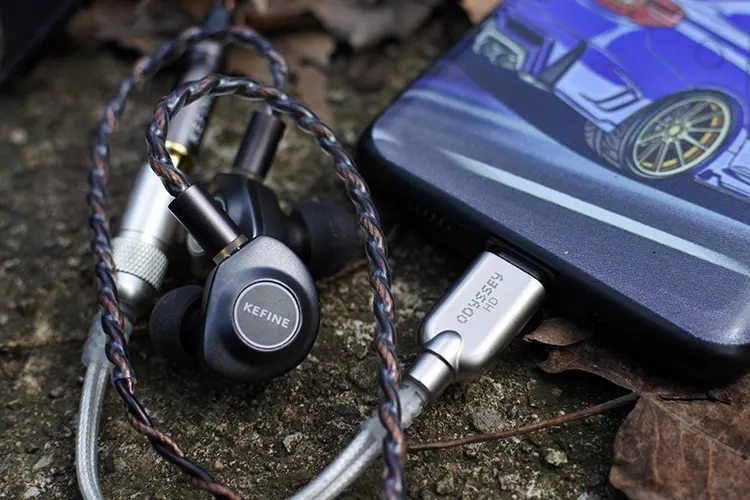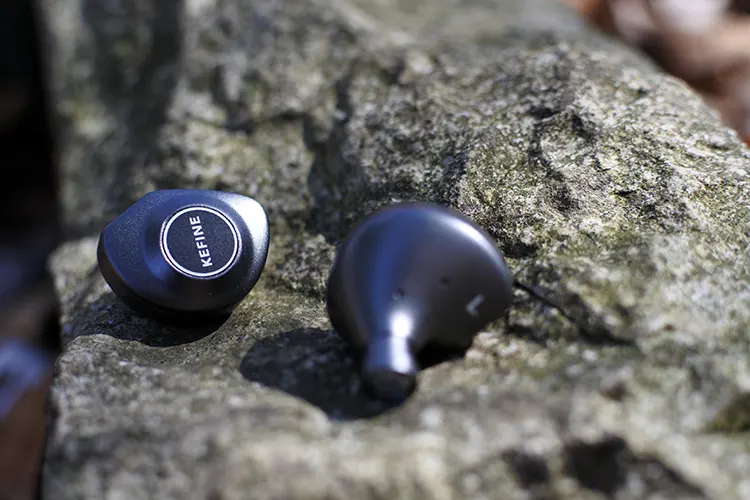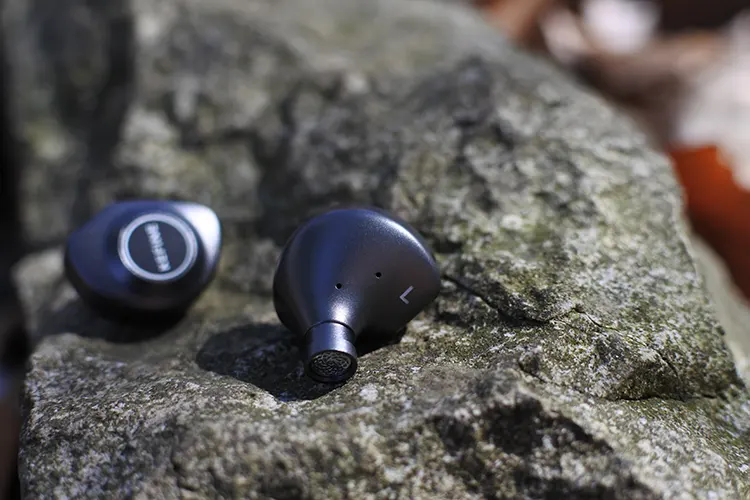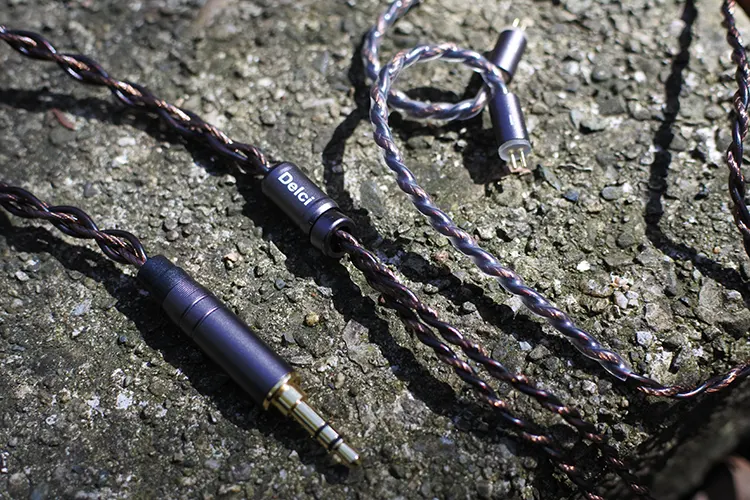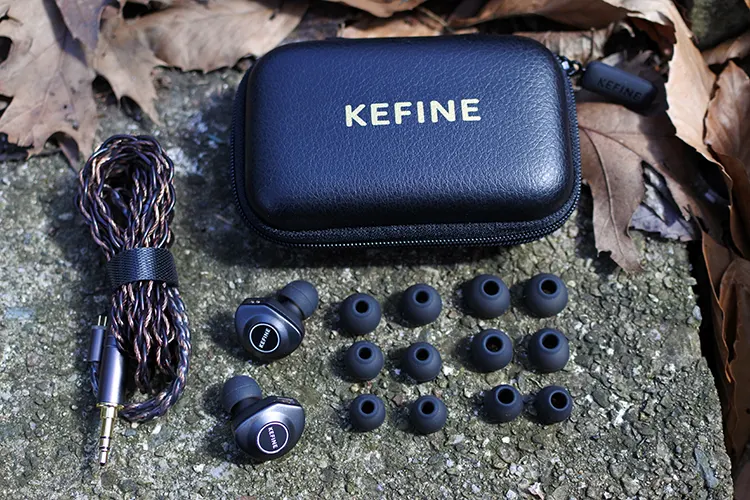In this feature, Thomas reviews the KEFINE Delci, which is a new entry-level and highly affordable single 10mm DLC dynamic driver universal IEM. It is priced at $59.
Disclaimer: This sample was sent to me in exchange for my honest opinion. Headfonics is an independent website with no affiliate links or status. I thank KEFINE for their support.
To read more about planar magnetic IEMs we have previously featured on Headfonics click here.
Please note, that this article follows our current scoring guidelines which you can read in more detail here.
KEFINE is a relatively new player in the earphone game with their first release called the Klanar recently reviewed by Kurt late last year.
That model was equipped with a 14.5m planar magnetic driver and described by Kurt as a “promising debut product for the company” with little to fault at that price point.
The Klanar gave the brand a strong start and now, with the $59 single dynamic driver Delci IEM, we have a more affordable option in the line-up but no less impressive follow-up.
Given the quality build and solid performance on tap, it is priced very reasonably and should be a crowd-pleaser in the months to come.
Tech Highlights
A few years back, DLC (diamond-like carbon) diaphragm coatings were reserved for flagship products.
Today, we have it being applied to the 10mm dynamic drivers in budget gear like the Delci, alongside polyurethane composites and a dual-cavity configuration for enhanced bass and staging performance.
Impressive techniques are also applied to the aluminum housings, which are machined from a single piece of aluminum. At 5.3g per side, they are exceptionally light and should be quite durable too thanks to the anodized coating.
While they’ve become more of an expectation than an exception with budget gear, removable cables have also become commonplace.
The Delci’s bi-color cable features 164 copper wires and a common 0.78mm 2-pin system which makes it easy to replace should the need, or want, arise.
Design
An ergonomic, low-profile design is used for the Delci’s universal fit shells. It looks like that of their original release, the Klanar, but this is a completely new design.
The interior of each shell is extremely smooth and free of any hard edges, with delicate curves leading into the nozzles. A pinhole vent can be found near the base of each nozzle, with another located further up near the L/R markers.
The nozzle openings are 6mm in diameter, which is about average, allowing a wide variety of tips to be used with this earphone. Ornate metal grills protect the interior from wax, dust, and debris.
On top are the 2-pin ports which sit flush with the housing. I quite like this design since with the right style of plug, it affords additional protection from damage because the pins are not left supporting the weight of the cable and cannot easily be bent side-to-side.
The anodized finish is smooth and blemish-free, but the gaps between the two halves of each shell are slightly inconsistent. Part fitment is better on some even more budget-minded products, but this issue is minor enough to be overlooked as the Delci is still quite affordable.
Comfort & Isolation
Thanks to the lightweight and low-profile design of the Delci, this is a comfortable product to wear for long periods.
Weight is distributed evenly around the outer ear, and the lack of hard or sharp edges avoids causing uncomfortable hot spots.
That said, there were two qualms I ran into, the first of which was that the left earpiece consistently lost seal, regardless of the type of ear tip I was using. This meant that I was routinely having to reseat the earpiece, which got old, fast.
The second was the right side pre-formed ear guide was misshapen and forced the cable away from the side of my head, causing it to pop up and over the ear when walking.
This was rectified by heating and re-forming the guide, which should not be necessary with any product, regardless of price.
Isolation is not a strong point of the Delci, though not unexpected given the dual vents and use of a dynamic driver.
Using the Delci while walking around outside, I had to increase the volume to counter outside noise, though not so much as to cause discomfort or dangerous listening levels.
Tips
KEFINE includes a selection of small and medium-bore silicone tips with the Delci. Since none of the available options provided a reliable seal in my left ear, alternatives were sought.
My usual go-to tips from JVC, Sony, and Final Audio were unable to provide a reliable seal, so I tried SpinFit CP100 and CP145 which worked fine.
The CP100 did a good job mimicking the stock small-bore tips, while the CP145 provided a solid alternative to the medium-bore tips, but with a small amount of additional mid-bass reduction and lower-treble emphasis.
ADV-Sound’s Eartune Fidelity U in their largest size was the best pairing though. Despite being a shallow tip, the elliptical shape permitted a reliable seal and sounded just as good as the stock medium bore tips.
For those who have no issues with the stock tips but want higher-quality alternatives, I recommend the Fidelity U and CP145 In place of the medium-bore set, and Sony Hybrids or Final Type E in place of the small-bore set.
These sets all do a good job of emulating the stock signature while providing a reliable seal.
Stock Cable
KEFINE has included a nice cable with the Delci. With its dual-color, braided design, copper wires, and metal hardware, it feels like it would be at home on a more expensive product.
The straight jack is gold-plated and reasonably compact, so you shouldn’t have issues with compatibility with various cell phones and/or DAP cases. While there is strain relief, it is short and stiff, and not very effective.
Heading up the cable, the y-split is a small metal cylinder with the Delci name printed on it. Strain relief is absent, but you do get a small metal chin cinch in its place which is a fair tradeoff.
Further up still we find preformed ear guides and metal 2-pin plugs that are well matched to the Delci’s aesthetics. Note that the right guide was formed in a way that would send the cable over the ear and away from the head which required it to be heated and re-shaped.
This cable’s handling is excellent. It is light, memory is almost completely absent, microphonics are low, and it rarely tangles.
Besides the issue with the misshapen ear guide, there are no other complaints I can levy against this cable. The handling characteristics alone make it superior to what most competitors offer.
Packaging & Accessories
KEFINE’s packaging for the Delci takes the classic “box within a sheath” approach. The exterior sheath has an image of the earphone on the front, while the rear contains the specification list.
Sliding off the sheath reveals a plain matte-black KEFINE-branded cardboard box. Inside you find a manual/warranty card, the earpieces set within a foam insert, and a carrying case that holds the remaining accessories.
Alongside the case, earphones and cable are a Velcro cable strap, medium-bore tips in small, medium, and large sizes, and small-bore tips in small, medium, and large sizes. An extra pair of the medium, small-bore tips comes preinstalled on the Delci.
This is a perfectly serviceable packaging and accessory kit that gives you just the necessities. Most of the packaging material is recyclable too, which is always a plus for those that do not keep it.
Sound Impressions
Summary
The KEFINE Delci has a well-rounded signature that provides listeners with elevated, well-extended bass, a clear midrange, and a sparkly high end.
However, instances of sibilance, poor low-end texturing, and a lack of depth in the presentation hold the Delci back from greatness. It’s still a strong performer though.
Bass
The Delci is sub-bass biased with excellent extension. On deep notes, you get plenty of visceral feedback that just falls short of the sort of rumble you’d get from a more bass-focused set.
Mid-bass smartly trails in emphasis ensuring the presentation isn’t boomy or overly warm. It also avoids bleeding into the lower mids and skewing vocal clarity.
The texture is a weak point though. Tracks that should sound grungy and crunchy lack these distinct qualities and come across as overly polished.
This is a quick driver though with the Delci easily tackling rapid bass notes. It decays quickly, attacks with precision, and doesn’t distort or falter until you hit dangerously high volumes well beyond anything considered safe.
Mids
The Delci’s midrange is well-balanced with the rest of the signature to avoid being drowned out by excessive bass, or overly bright treble.
Clarity is good for an earphone with this much bass, with the presence of micro-details being a few steps up from the below-average texturing of the low end. Vocals and instruments are forward and clear but avoid coming across as shouty or harsh, usually.
While there is an appropriate amount of warmth, vocals lack density and there are bouts of sibilance that are exacerbated on tracks already mastered quite hot.
Aesop Rock’s “The Gates” from the Spirit World Field Guide album provides a good example of this, along with most of the rest of the album.
Overall, the signature is reasonably natural. I found the presentation of drums plasticky though, and as such I got the most enjoyment out of the Delci when listening to electronic-biased music.
Treble
Delci’s presence region bias helps give it a clear presentation with a strong note definition that is free of splash or looseness. Harshness is avoided and is very pleasant overall.
Extension into the brilliance region is good with decent emphasis, enough to give the Delci a satisfying shimmer and sparkle to instruments and high notes. The presentation here is lean though, and as a result, notes can be a bit sharp, but not fatiguing.
The speed and control of these drivers are on display once again. Even on extremely busy passages, individual notes are well-defined thanks to controlled start and endpoints.
Staging & Dynamics
Staging on the Delci is quite wide with the default vocal positioning sitting just outside the ear. Sounds extend quite far, trailing off to the shoulders at times which is impressive.
The fantastic width of the stage is countered by a disappointingly shallow presentation that nearly provides a wall-of-sound effect. This compromises the Delci’s ability to layer track elements but thankfully doesn’t hinder its instrument separation which is still quite effective.
Channel-to-channel imaging is also a plus, with smooth side-to-side transitions. It’s not hard to follow effects as they shift around, even just off-center where other earphones are vague and lack precision.
The lack of staging depth keeps it from being a good earphone for gaming though. You are forced to rely on loudness to determine distance since spatial queues are lacking.
Click on page 2 below for my recommended pairings and selected comparisons.





